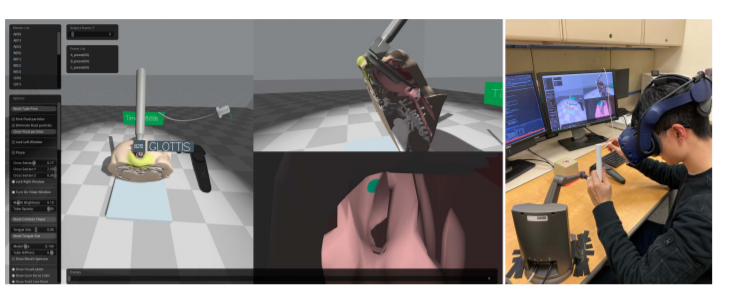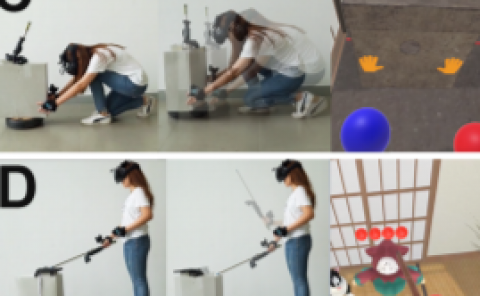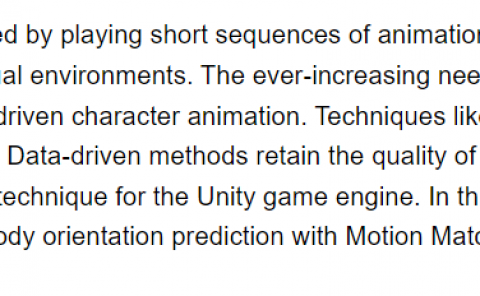A Physics-based Virtual Reality Simulation Framework for Neonatal Endotracheal Intubation
PubDate:March 2020
Teams: 1George Washington University* 2National Children’s Health Systems
Writers: Xiao Xiao1 Shang Zhao1 Yan Meng1 Lamia Soghier2 Xiaoke Zhang1 James Hahn
PDF: A Physics-based Virtual Reality Simulation Framework for Neonatal Endotracheal Intubation

Abstract
Neonatal endotracheal intubation (ETI) is a complex procedure. Low intubation success rates for pediatric residents indicate the current training regimen is inadequate for achieving positive patient outcomes. Computer-based training systems in this field have been limited due to the complex nature of simulating in real-time, the anatomical structures, soft tissue deformations and frequent tool interactions with large forces which occur during actual patient intubation. This paper addresses the issues of neonatal ETI training in an attempt to bridge the gap left by traditional training methods. We propose a fully interactive physics-based virtual reality (VR) simulation framework for neonatal ETI that converts the training of this medical procedure to a completely immersive virtual environment where both visual and physical realism were achieved. Our system embeds independent dynamics models and interaction devices in separate modules while allowing them to interact with each other within the same environment, which offers a flexible solution for multi-modal medical simulation scenarios. The virtual model was extracted from CT scans of a neonatal patient, which provides realistic anatomical structures and was parameterized to allow variations in a range of features that affect the level of difficulty. Moreover, with this manikin-free VR system, we can capture and visualize an even larger set of performance parameters in relation to the internal geometric change of the virtual model for real-time guidance and post-trial assessment. Lastly, validation study results from a group of neonatologists are presented demonstrating that VR is a promising platform to train medical professionals effectively for this procedure. *


